Unveiling the Mystique of Xianling Mausoleum: A Must-Visit Cultural Treasure

An Essential Guide to Visiting Xianling Mausoleum Heritage
In This Guide
- An Essential Guide to Visiting Xianling Mausoleum Heritage
- The Rich History and Legends of Xianling Mausoleum Heritage
- Main Highlights: What You Absolutely Can’t Miss
- Planning Your Visit: A Practical Guide
- Tickets: Prices, Booking, and Tips
- How to Get There: A Complete Transportation Guide
- Local Cuisine and Accommodation Nearby
- Frequently Asked Questions
- Final Thoughts on Your Trip
Discover the Majesty of Chinese Imperial History
Nestled in the tranquil embrace of Nanjing’s Purple Mountain range, the Xianling Mausoleum (显陵) stands as a testament to the grandeur of the Ming Dynasty and the rich tapestry of Chinese history. This UNESCO World Heritage site is not just a burial ground; it is an awe-inspiring complex that reflects the imperial ambitions and architectural brilliance of its era. As the final resting place of Emperor Xuanzong and his consort, Empress Zhang, the mausoleum offers a profound glimpse into the grandeur and rituals of Chinese imperial life.
Visitors to the Xianling Mausoleum are treated to a breathtaking journey along a majestic pathway lined with impressive stone statues, known as the Spirit Way. This path, adorned with intricately carved stone figures of animals and officials, leads to the tomb itself, where the artistry of Ming Dynasty craftsmanship is on full display. The serene and picturesque setting, combined with the historical significance of the site, makes it a quintessential destination for those seeking to understand the depth of China’s imperial past.

Xianling Mausoleum Heritage.
As you wander through the expansive grounds, you will find yourself immersed in a landscape that tells stories of reverence and respect for the deceased, echoing the profound cultural beliefs surrounding death and the afterlife in Chinese tradition. The harmonious blend of nature and architecture invites contemplation and reflection, making it a perfect escape from the hustle and bustle of modern life.
In this essential guide, we will explore the Xianling Mausoleum Heritage in depth, providing you with tips on what to see, how to navigate the site, and the best ways to appreciate its historical and cultural significance. Whether you’re a history buff, a cultural enthusiast, or simply in search of a serene experience, the Xianling Mausoleum promises to leave an indelible mark on your journey through China.
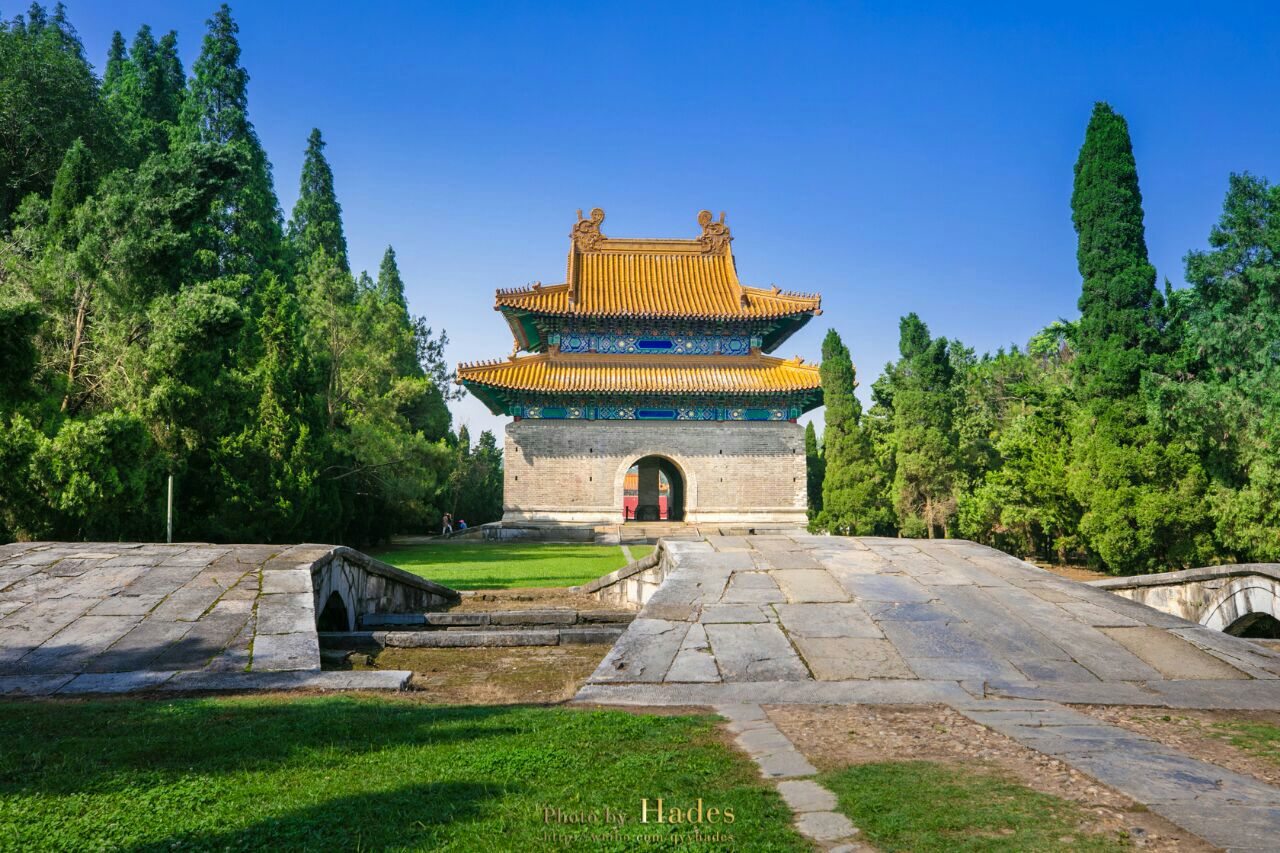
Xianling Mausoleum Heritage.
The Rich History and Legends of Xianling Mausoleum Heritage
Nestled in the scenic Purple Mountain area of Nanjing, the Xianling Mausoleum (明显陵) stands as a monumental testament to the Ming Dynasty’s grandeur and the rich tapestry of Chinese history. This imperial tomb is not just a resting place for emperors but a site steeped in legends, cultural significance, and architectural brilliance.
A Glimpse into History
The Xianling Mausoleum is the final resting place of Zhu Yuanzhang, the founding emperor of the Ming Dynasty, and his empress, Ma. Completed in 1386, it exemplifies the Ming Dynasty’s architectural style and reflects the era’s philosophies regarding death and the afterlife. The site is part of a larger complex of tombs and is notable for its intricate design and alignment with the principles of feng shui, which emphasizes harmony between human beings and their environment.
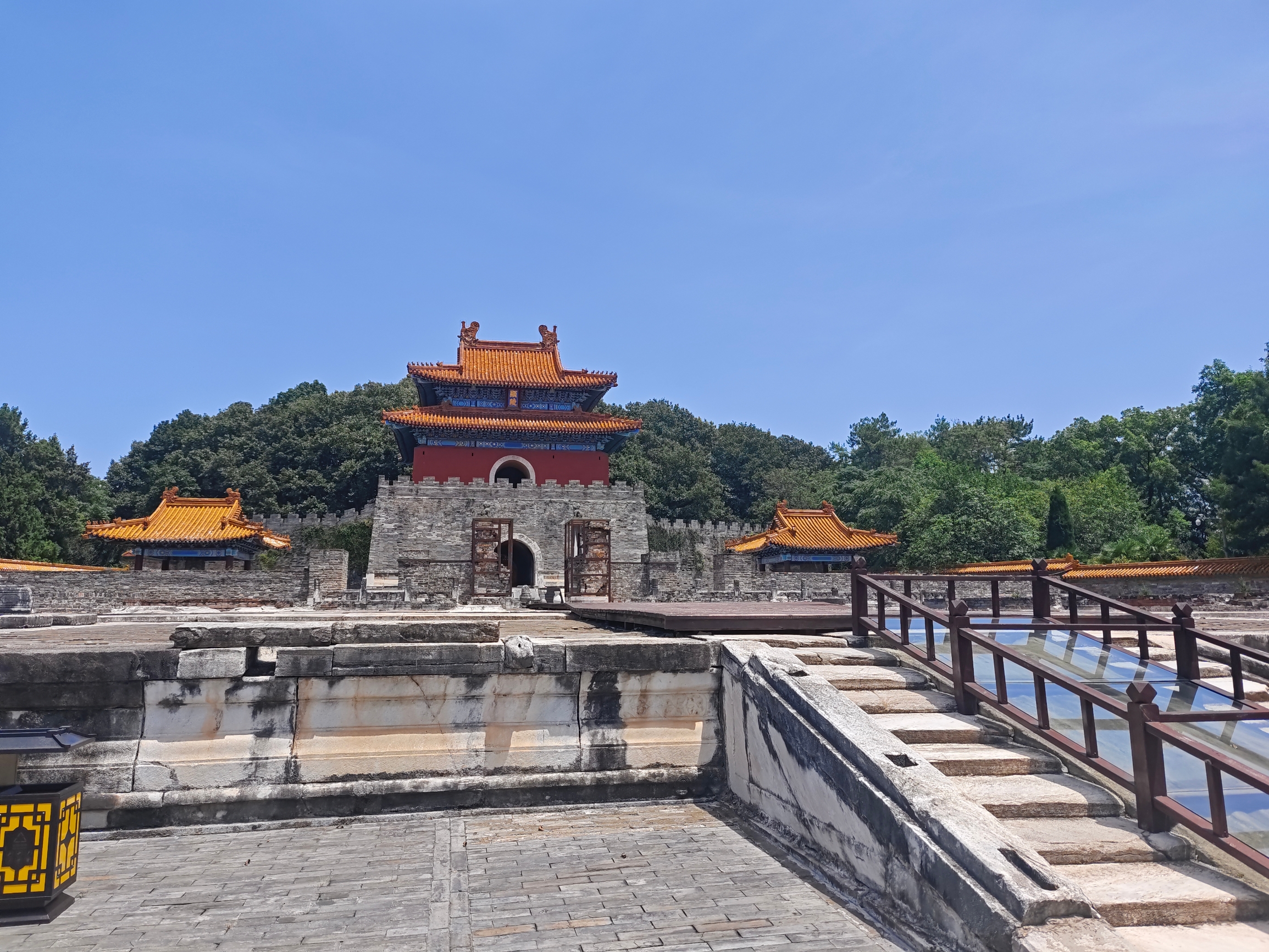
Xianling Mausoleum Heritage.
The mausoleum showcases both the power of the dynasty and the reverence for ancestors that permeates Chinese culture. The pathway leading to the tomb is lined with majestic stone statues, known as the “Spirit Way,” which symbolizes the journey of the deceased into the afterlife. Travelers can walk along this impressive route, flanked by statues of mythical creatures and military officials, each representing protection and guidance.
Architectural Marvel
The architectural elegance of Xianling Mausoleum is highlighted by its harmonious integration into the natural landscape. The tomb is designed according to traditional Chinese cosmology, with careful consideration of the surrounding mountains and rivers. The layout features a series of gates, courtyards, and altars, all meticulously arranged to create a sense of grandeur and serenity.

Xianling Mausoleum Heritage.
Key features include:
– The Spirit Way: A grand pathway flanked by stone lions and officials, leading visitors toward the main tomb.
– The Main Tomb Chamber: A large, domed structure that houses the emperor’s and empress’s coffins, adorned with exquisite carvings and ceilings.
– The Linggu Temple: Nearby, this temple adds an additional layer of cultural significance and serves as a place for worship and reflection.
Legends and Cultural Significance
Over the centuries, Xianling Mausoleum has been the backdrop for various legends and folklore. One of the most intriguing stories involves the mystical powers attributed to the tomb. It is said that the spirits of the emperor and empress continue to guard the land, bringing prosperity to the region. Many locals believe that paying respects at the mausoleum can bring good fortune and blessings.
In addition to its supernatural associations, the mausoleum has played a pivotal role in Chinese history. It has witnessed significant events, including political turmoil and cultural shifts, serving as a reminder of the enduring legacy of the Ming Dynasty. The site also became a popular pilgrimage destination, where visitors come to pay homage to the past and learn about the rich heritage of China.
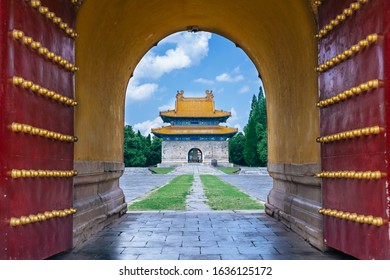
Xianling Mausoleum Heritage.
Visiting Experience
For international travelers, a visit to Xianling Mausoleum is more than just a sightseeing excursion; it’s an immersive experience into the depths of Chinese history and culture. As you stroll along the Spirit Way, take a moment to absorb the atmosphere, where every statue and pathway whispers tales of bravery, love, and the quest for eternal peace.
In conclusion, the Xianling Mausoleum is a remarkable heritage site that not only commemorates the Ming Dynasty but also encapsulates the profound respect for ancestors deeply rooted in Chinese culture. Its history, legends, and breathtaking architecture make it an essential destination for anyone eager to explore the richness of China’s past.
Main Highlights: What You Absolutely Can’t Miss
When visiting the Xiaoling Mausoleum, also known as the Ming Xiaoling Tomb, you are stepping into a realm rich with history and culture, where the grandeur of the Ming Dynasty is palpable. This UNESCO World Heritage Site, located in Nanjing, is not just a tomb; it is a masterpiece of architecture and a symbol of imperial power. Here are the main highlights that you absolutely cannot miss:
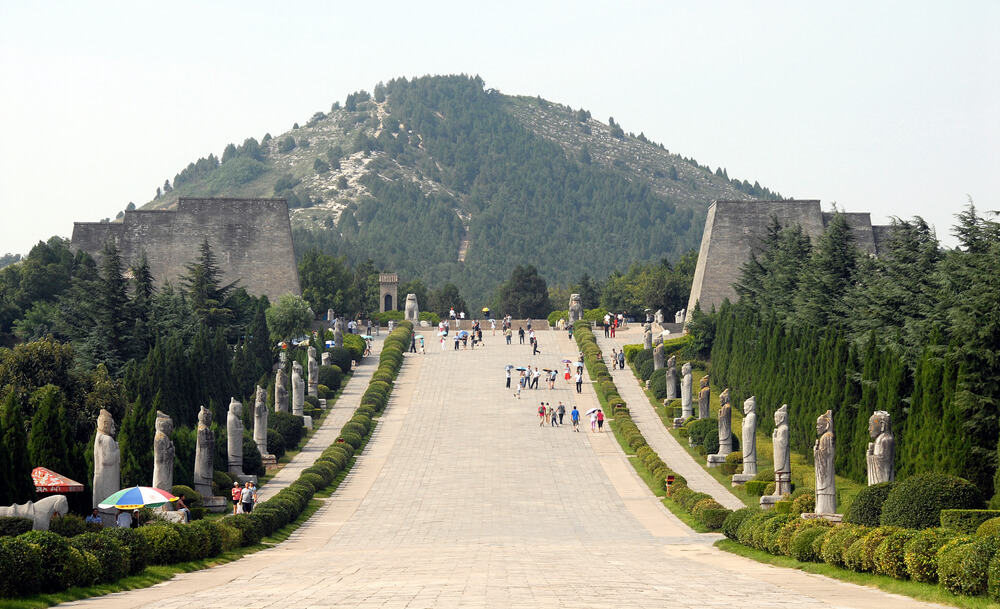
Xianling Mausoleum Heritage.
1. The Imposing Entrance
As you approach the mausoleum, you’ll first encounter the majestic Sacred Way (Shendao), a grand pathway lined with impressive stone statues of animals and officials. These figures, guarding the entrance, serve as a reminder of the power and prestige of the Ming Dynasty. Take your time to walk along this path and appreciate the artistry and symbolism behind each statue.
2. The Tomb Complex
The Xiaoling Mausoleum itself is a remarkable feat of engineering and design. Surrounded by lush greenery, it harmoniously blends with the natural landscape. The main structure, with its large stone platform and intricate carvings, is both awe-inspiring and humbling. Be sure to explore the various chambers, where you can learn about the burial customs of the Ming emperors and the significance of the artifacts found within.
3. The Linggu Temple
Adjacent to the mausoleum is the Linggu Temple, a serene site that features beautiful pagodas and tranquil gardens. This temple complex not only serves as a place of worship but also offers stunning views of the surrounding landscape. Climb the nearby hill to see the Linggu Pagoda, a striking structure that stands as a testament to the architectural prowess of its time.

Xianling Mausoleum Heritage.
4. The Historical Significance
Understanding the historical context of Xiaoling Mausoleum enriches your visit. As the burial site of the Hongwu Emperor, the founder of the Ming Dynasty, the tomb represents the power transition during a transformative period in Chinese history. The mausoleum is not just a resting place but a symbol of the dynasty’s enduring legacy and influence.
5. Scenic Surroundings
The mausoleum is nestled within the picturesque Purple Mountain area, which is perfect for hiking and exploring. The surrounding park features beautiful walking trails and serene lakes, providing a peaceful retreat from the bustling city. Don’t forget to bring your camera; the natural beauty here complements the grandeur of the tomb perfectly.
6. Cultural Events and Activities
Depending on when you visit, you might be fortunate enough to experience cultural events held at the mausoleum. Traditional ceremonies, performances, and exhibitions often take place, allowing you to immerse yourself in the rich heritage of the Ming Dynasty.

Xianling Mausoleum Heritage.
7. Local Cuisine
After exploring the mausoleum, treat yourself to local Nanjing cuisine at nearby restaurants. Try the famous Nanjing salted duck or indulge in some dumplings—a culinary journey that will enhance your overall experience of this historic city.
8. Accessibility and Visitor Information
The Xiaoling Mausoleum is open daily from 7:00 AM to 8:00 PM. Plan your visit accordingly to avoid crowds, particularly on weekends and holidays. Consider joining a guided tour for deeper insights into the history and architecture of this magnificent site.
Conclusion
The Xiaoling Mausoleum is a remarkable intersection of history, culture, and natural beauty. Whether you’re a history buff or simply a curious traveler, this site offers an unforgettable glimpse into China’s imperial past. Make sure to take your time, soak in the atmosphere, and let the stories of the Ming Dynasty unfold around you.

Xianling Mausoleum Heritage.
Planning Your Visit: A Practical Guide
Discovering Xiaoling Mausoleum: A Practical Guide for Your Visit
Nestled within the majestic Purple Mountain area of Nanjing, the Xiaoling Mausoleum (Ming Xiaoling) stands as a testament to the grandeur of the Ming Dynasty and the rich tapestry of Chinese history. This UNESCO World Heritage site is not only the final resting place of the first emperor of the Ming Dynasty, Zhu Yuanzhang, but also an embodiment of ancient Chinese architectural and cultural traditions. Here’s everything you need to know to make the most of your visit.
Opening Hours and Admission
- Hours of Operation:
- Daily: 7:00 AM – 8:00 PM
- Admission Fee: While the ticket pricing can vary, it typically ranges between 70-100 RMB for adults. Discounts may be available for students and seniors.

Xianling Mausoleum Heritage.
Getting There
Location:
Xiaoling Mausoleum, Wengzhong Road, Xuanwu District, Nanjing 210018, China
Transportation Options:
– Public Transport:
– Take Metro Line 2 to “Ming Xiaoling” station; it’s a short walk from there.
– Several local buses also service the area, making it convenient for visitors.
– Taxi or Ride-Sharing: Easily available throughout Nanjing, this is a great option for those who prefer a direct route.
– Walking: If you are staying nearby, the pleasant surroundings of the Purple Mountain make for a lovely walk.
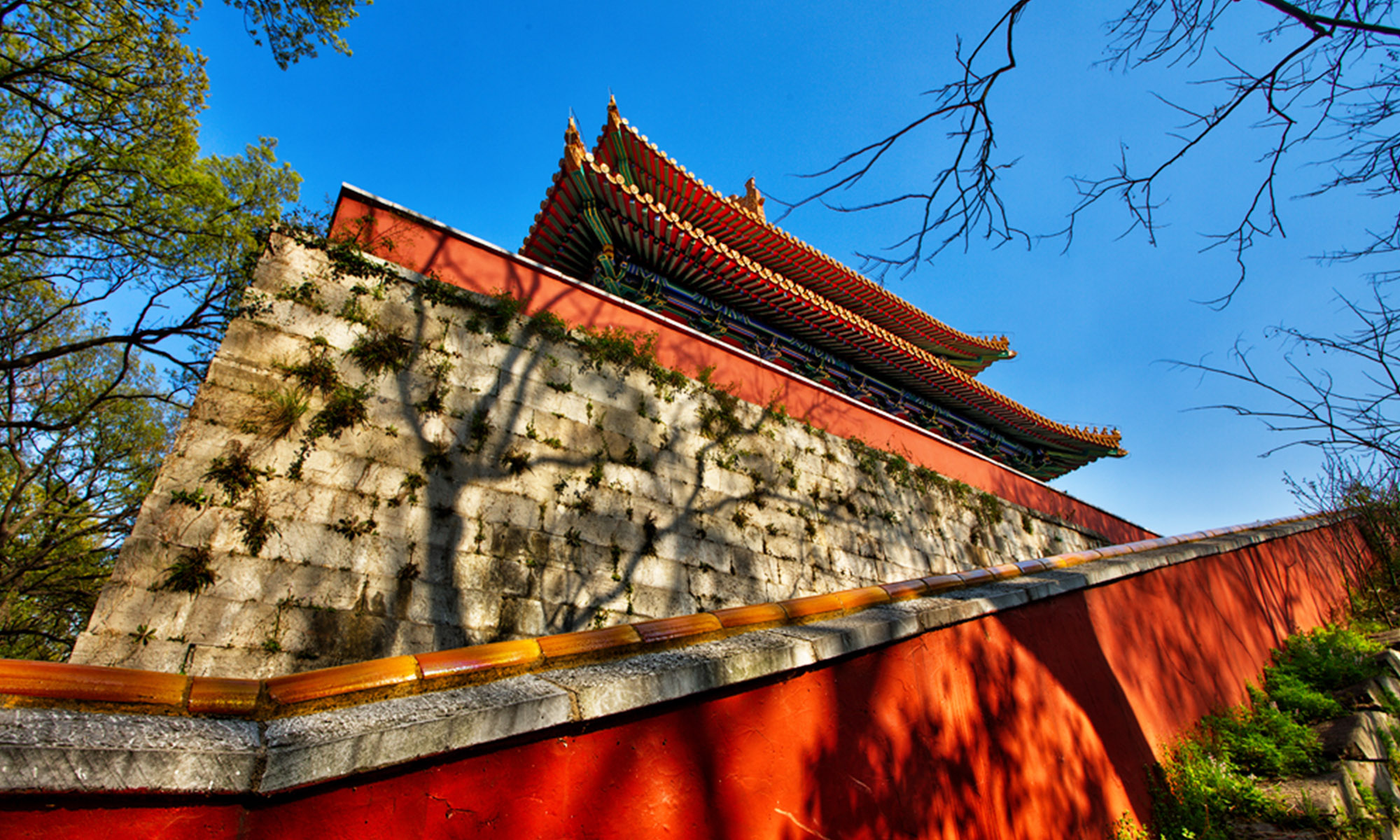
Xianling Mausoleum Heritage.
What to Expect
Upon entering the mausoleum, visitors are greeted by a stunning pathway lined with impressive stone statues, known as the Spirit Way, which leads to the main tomb. Expect to spend at least 2-3 hours exploring the expansive grounds, which include:
- The Spirit Way: A majestic pathway flanked by stone animals and officials, symbolizing the emperor’s journey to the afterlife.
- The Main Tomb: The burial site itself, featuring intricate stone carvings and a serene atmosphere.
- Surrounding Park: The mausoleum is set within a lush park, perfect for a leisurely stroll or a quiet moment of reflection.
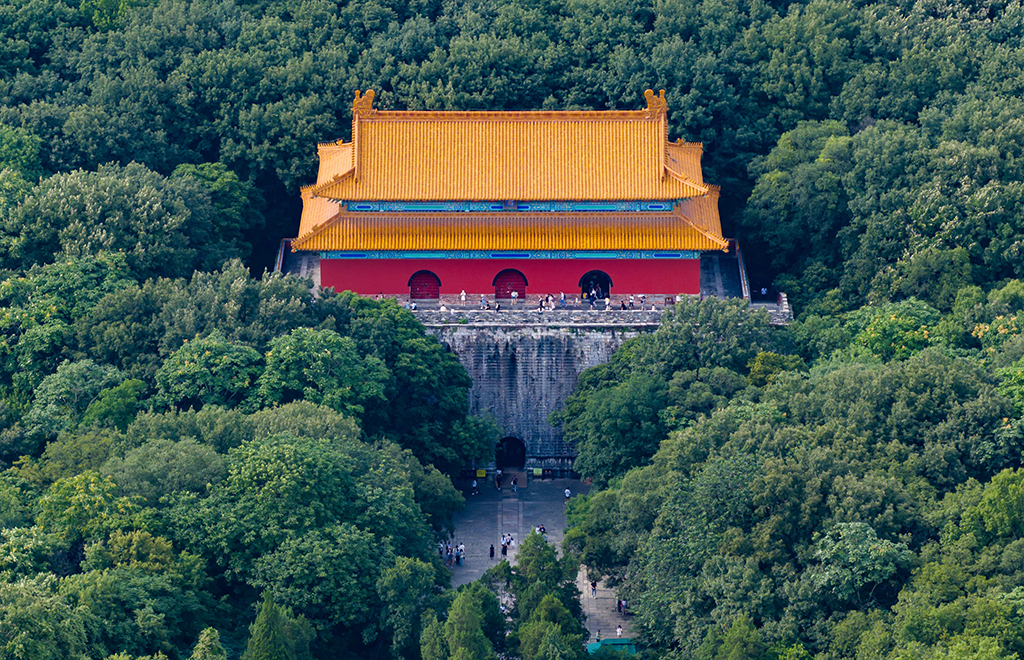
Xianling Mausoleum Heritage.
Guided Tours and Experiences
Enhance your experience by considering a guided tour. Several options are available:
– Private Day Tours: Customizable itineraries that can include other historical sites like the Sun Yat-sen Mausoleum or the Nanjing City Wall.
– Self-Guided Tours: For those who prefer a more independent exploration, consider renting a car with a driver for the day.
– Cultural Experiences: Some tours offer the chance to experience local cuisine and culture, giving you a taste of Nanjing beyond the mausoleum.
Nearby Attractions
Make the most of your trip by exploring nearby landmarks:
– Sun Yat-sen Mausoleum: A short distance away, this site pays homage to the founding father of modern China.
– Linggu Temple: Known for its ancient architecture and beautiful surroundings.
– Zijinshan Observatory: Offers a stunning view of the area and is a great spot for photography.
Dining Options
After a day of exploration, you’ll find numerous dining options nearby:
– Nanjing Impressions: Enjoy traditional Jiangsu cuisine.
– DongJiao GuoBinGuan: A top-rated Cantonese restaurant, perfect for a more upscale dining experience.
– Local Street Food: Don’t miss the chance to try local specialties like Nanjing salted duck or dumplings from street vendors.
Tips for a Memorable Visit
- Dress Comfortably: Wear comfortable shoes and clothing, as you will be doing a fair amount of walking.
- Stay Hydrated: Bring water, especially in the warmer months.
- Respect the Site: As a historical and cultural site, maintain a respectful demeanor while exploring.
- Capture the Moments: Bring a camera to capture the stunning architecture and scenic views.
Conclusion
A visit to the Xiaoling Mausoleum offers a unique glimpse into China’s rich history and cultural heritage. With careful planning and an adventurous spirit, your journey through this historical treasure will be both enlightening and unforgettable. Enjoy your exploration of this magnificent site!
Tickets: Prices, Booking, and Tips
Essential Information for Visiting the Xiaoling Mausoleum Heritage (明显陵)
When planning your visit to the magnificent Xiaoling Mausoleum, also known as the Ming Xiaoling Tomb, it’s crucial to be informed about ticket prices, booking options, and helpful tips to enhance your experience. Nestled at the foot of Purple Mountain in Nanjing, this UNESCO World Heritage site offers a captivating glimpse into Ming Dynasty history, making it a must-see for any traveler interested in Chinese culture.
Ticket Prices
- General Admission: Approximately ¥70 (Chinese Yuan) per person.
- Discounted Tickets: Reduced rates are available for students and seniors. Always check for eligibility and required identification.
- Free Admission Days: Certain national holidays may offer free entry, but expect larger crowds during these times.
Booking Options
- On-Site Purchase: Tickets can be purchased directly at the entrance. However, be prepared for potential queues, especially during weekends and holidays.
- Online Booking: To skip the lines and guarantee your entry, consider booking your tickets in advance through official tourism websites or reliable travel platforms. This option often allows for flexible date changes.
- Guided Tours: Many local tour operators offer packages that include admission to the mausoleum along with guided services. Prices typically range from ¥100 to ¥300, depending on the inclusions, such as transportation and meals.
Tips for a Memorable Visit
-
Best Time to Visit: The mausoleum is open year-round, but visiting in the early morning or late afternoon can help you avoid the peak tourist crowds and enjoy a more tranquil experience.
-
Plan for Weather: Nanjing experiences distinct seasons. Spring and autumn are ideal for pleasant temperatures, while summers can be hot and humid. Dress accordingly and stay hydrated.
-
Explore Surrounding Areas: The Xiaoling Mausoleum is situated within a larger scenic area. Allocate extra time to explore nearby attractions such as the Sun Yat-sen Mausoleum and the Linggu Temple.
-
Photography Tips: Bring your camera! The impressive architecture and lush surroundings provide stunning backdrops for photographs. Just remember to be respectful of other visitors.
-
Local Cuisine: Don’t miss the opportunity to sample Nanjing’s famous duck dishes and other local specialties at nearby restaurants after your visit.
-
Transportation: The mausoleum is accessible via public transport, including buses and taxis. If you prefer a more comfortable option, consider hiring a private car or joining a tour that includes transportation.
By being informed about ticket prices and booking options, along with these essential tips, you can ensure that your visit to the Xiaoling Mausoleum is both enriching and enjoyable. Embrace the history and culture of this remarkable site, and let it transport you back to the grandeur of the Ming Dynasty.
How to Get There: A Complete Transportation Guide
Navigating Your Way to Xiaoling Mausoleum
Visiting the Xiaoling Mausoleum in Nanjing, a UNESCO World Heritage site, is a journey steeped in history and cultural significance. This guide will help you navigate the various transportation options available to reach this magnificent imperial tomb, ensuring a smooth and enjoyable visit.
Getting to Nanjing
Before you can explore Xiaoling Mausoleum, you’ll need to arrive in Nanjing. Here are the primary transportation methods:
- By Air:
- Nanjing Lukou International Airport (NKG) is the nearest airport, located about 40 kilometers (24 miles) from the city center.
-
Direct flights connect Nanjing with major cities across China and international destinations.
-
By Train:
- Nanjing boasts several train stations, with Nanjing Railway Station and Nanjing South Railway Station being the main hubs.
-
High-speed trains link Nanjing to cities like Shanghai (approximately 1.5 hours), Beijing (around 3.5 hours), and Hangzhou (about 2 hours).
-
By Bus:
- Long-distance buses from neighboring cities and provinces arrive at various bus stations in Nanjing, including the Nanjing West Bus Station.
Reaching Xiaoling Mausoleum
Once you arrive in Nanjing, the Xiaoling Mausoleum can be accessed via several convenient transportation options:
- Public Transit:
- Metro: Take Line 2 to Xuanwu Gate Station, then transfer to bus No. 34, 81, or 9, which will take you directly to the mausoleum entrance.
-
Buses: Numerous city buses run to the Xiaoling area. Routes 34, 81, and 9 are particularly reliable.
-
Taxi Services:
-
Taxis are readily available throughout Nanjing. Simply show the driver the address: Wengzhong Road, Xuanwu District. The fare from the city center is approximately 30-50 RMB ($5-8).
-
Ride-Hailing Apps:
-
Popular apps like Didi Chuxing provide an efficient way to book rides in Nanjing. The interface is user-friendly, and many drivers speak basic English.
-
Walking:
- If you are staying nearby, a leisurely stroll to Xiaoling Mausoleum can be a delightful way to experience the scenic surroundings of Purple Mountain.
Tips for a Smooth Journey
- Plan Ahead: Check local transit schedules online or via apps, especially if you’re traveling on weekends or holidays when services may vary.
- Language Assistance: Having the destination written in Chinese can be very helpful, especially for taxi drivers or when using public transport.
- Timing Your Visit: The mausoleum is open daily from 7:00 AM to 8:00 PM, but visiting earlier in the day can help you avoid crowds.
Nearby Attractions
Enhance your visit by exploring other nearby historical sites, such as:
- Sun Yat-sen Mausoleum (1.1 km away)
- Linggu Temple (1.9 km away)
- The Ming City Wall (2.6 km away)
By following this guide, you’ll be well-equipped to experience the grandeur of Xiaoling Mausoleum and immerse yourself in the rich history of Nanjing. Safe travels!
Local Cuisine and Accommodation Nearby
Exploring the rich history and culture surrounding the Xianling Mausoleum Heritage (明显陵) in Nanjing is an unforgettable experience, and what better way to enhance your visit than by indulging in the local cuisine and finding the perfect place to stay? Here are some recommendations to ensure your trip is as flavorful and comfortable as it is enlightening.
Culinary Delights
Nanjing boasts a vibrant culinary scene that reflects its historical significance. Here are a few must-try restaurants nearby:
- DongJiao GuoBinGuan Restaurant
- Cuisine: Cantonese
- Rating: 5.0/5
- Distance: 0.6 miles
-
Highlights: Renowned for its exceptional dim sum and fresh seafood, this restaurant offers a perfect blend of traditional flavors in an elegant setting.
-
Nanjing Impressions (Zhongshanling)
- Cuisine: Chinese (Zhejiang)
- Rating: 4.2/5
- Distance: 1.2 miles
-
Highlights: This popular establishment serves an array of local dishes, including Nanjing-style salted duck, allowing you to savor authentic Jiangsu flavors.
-
Er Wa SuanCai Yu
- Cuisine: Seafood
- Rating: 4.0/5
- Distance: 1.2 miles
-
Highlights: Specializing in pickled fish, this eatery provides a unique twist on traditional seafood dishes that you won’t want to miss.
-
Liu ZhangXing (Wei Gang)
- Cuisine: Chinese
- Rating: 5.0/5
- Distance: 1.3 miles
-
Highlights: A hidden gem known for its authentic local dishes and warm atmosphere, perfect for an intimate dining experience.
-
HanJiang Korean Restaurant (Wei Jing)
- Cuisine: Korean
- Rating: 5.0/5
- Distance: 1.5 miles
- Highlights: If you’re in the mood for something different, this restaurant offers a delightful selection of Korean dishes, from barbecue to traditional stews.
Accommodation Options
To complement your culinary explorations, consider staying at one of these nearby accommodations, which provide comfort and convenience:
- Grand Metropark Hotel
- Rating: 3.0/5
- Distance: 1.5 miles
-
Highlights: This centrally located hotel offers modern amenities and easy access to both the mausoleum and local attractions, making it a practical choice for travelers.
-
Nian Fa 168 Hotel
- Rating: 3.5/5
- Distance: 1.5 miles
-
Highlights: With comfortable rooms and a friendly atmosphere, this hotel serves as a great base for exploring Nanjing’s historical sites.
-
Local Guesthouses
- Consider exploring local guesthouses in the Xuanwu District for a more intimate and culturally immersive experience. These accommodations often feature traditional decor and personalized service, allowing you to feel more connected to the local culture.
Conclusion
With an array of delectable dining options and comfortable accommodations, your visit to the Xianling Mausoleum Heritage (明显陵) can be both enriching and enjoyable. Be sure to savor the authentic flavors of Nanjing while resting in a cozy haven nearby, and you’ll surely leave with unforgettable memories of this historic city.
Frequently Asked Questions
Frequently Asked Questions about Xiaoling Mausoleum Heritage (明显陵)
1. What is the Xiaoling Mausoleum?
The Xiaoling Mausoleum is the tomb of the Hongwu Emperor Zhu Yuanzhang, the founding emperor of the Ming Dynasty, and his empress. It is a UNESCO World Heritage site and an exemplary representation of ancient Chinese imperial tomb architecture, featuring traditional elements such as stone statues, ceremonial pathways, and intricate carvings.
2. Where is the Xiaoling Mausoleum located?
The mausoleum is situated in Nanjing, Jiangsu Province, China, on the southern slope of the Purple Mountain (Zijin Shan). It is easily accessible from the city center, making it a popular destination for both tourists and locals.
3. What are the opening hours?
The Xiaoling Mausoleum is open from 7:00 AM to 8:00 PM daily. It’s advisable to visit early in the day to avoid crowds and enjoy a more peaceful experience.
4. How much does it cost to visit?
Admission to the Xiaoling Mausoleum is typically around Yuan 70 for adults. Discounts may be available for students and seniors, so it’s wise to bring identification.
5. Is there public transportation available?
Yes, public transportation is available to reach the mausoleum. You can take bus routes 34, 71, or 204, which stop near the entrance. Taxis and ride-sharing apps are also convenient options for direct access.
6. What should I wear when visiting?
Comfortable walking shoes are highly recommended, as there is a fair amount of walking involved. Dress in layers, as the temperature can vary throughout the day. Being respectful of the site, avoid overly casual attire.
7. Are there guided tours available?
Yes, several guided tours are offered, ranging from half-day to full-day experiences that include visits to other historical sites in Nanjing, such as the Sun Yat-sen Mausoleum and the Ming City Wall. These tours often provide deeper insights into the historical significance of the mausoleum.
8. What can I expect to see during my visit?
Expect to be mesmerized by the stunning architecture and the serene surroundings. Key features include:
– The Sacred Way: A beautiful pathway lined with stone statues of animals and generals.
– The Main Tomb: A majestic structure that houses the remains of the Hongwu Emperor and his empress.
– Surrounding Parklands: Lush greenery and scenic views of the Purple Mountain, ideal for photography and leisurely walks.
Visiting the Xiaoling Mausoleum is not just a journey through history; it’s an opportunity to experience the grandeur of ancient Chinese culture. Enjoy your visit!
Final Thoughts on Your Trip
As you prepare to leave the majestic Xiaoling Mausoleum, take a moment to reflect on the profound journey through history you’ve undertaken. This UNESCO World Heritage site is not just a resting place for emperors; it is a gateway into the heart of Ming Dynasty culture, showcasing architectural brilliance and the deep spirituality that characterized an era.
A Journey Through Time
Visiting Xiaoling is akin to stepping into a living history book. The grand stone pathway flanked by majestic animal statues, the serene beauty of the surrounding park, and the intricate details of the tomb itself all invite you to appreciate the artistry and dedication of the craftsmen who built this remarkable site.
Cultural Significance
The mausoleum is more than an architectural wonder; it embodies the essence of Chinese tradition and belief in the afterlife. The harmonious blend of nature and human craftsmanship reflects the Taoist principles that governed Ming society, emphasizing balance, respect for nature, and the reverence for ancestors.
Final Thoughts
As you conclude your visit, consider not only the sights you have seen but also the stories that echo through the mausoleum’s walls and the lessons of resilience and ingenuity that it represents. Whether you’re a history buff, a lover of art, or simply a curious traveler, Xiaoling Mausoleum offers a rich tapestry of experiences that will undoubtedly linger in your memory long after you leave its grounds.
Recommendations for Your Next Steps
- Explore Nearby Attractions: Don’t miss the Sun Yat-sen Mausoleum and the Nanjing City Wall, both of which enrich your understanding of the region’s history.
- Savor Local Cuisine: Treat yourself to a meal at one of the nearby restaurants to experience the flavors of Nanjing, where culinary traditions are as rich as the history.
- Reflect and Share: Take a moment to jot down your thoughts or share your experiences with fellow travelers; your insights can inspire others to embark on their own journeys of discovery.
As you depart from this magnificent site, carry with you the stories, sights, and sounds of Xiaoling, and let them inspire your future explorations in the fascinating tapestry of Chinese history and culture. Safe travels!